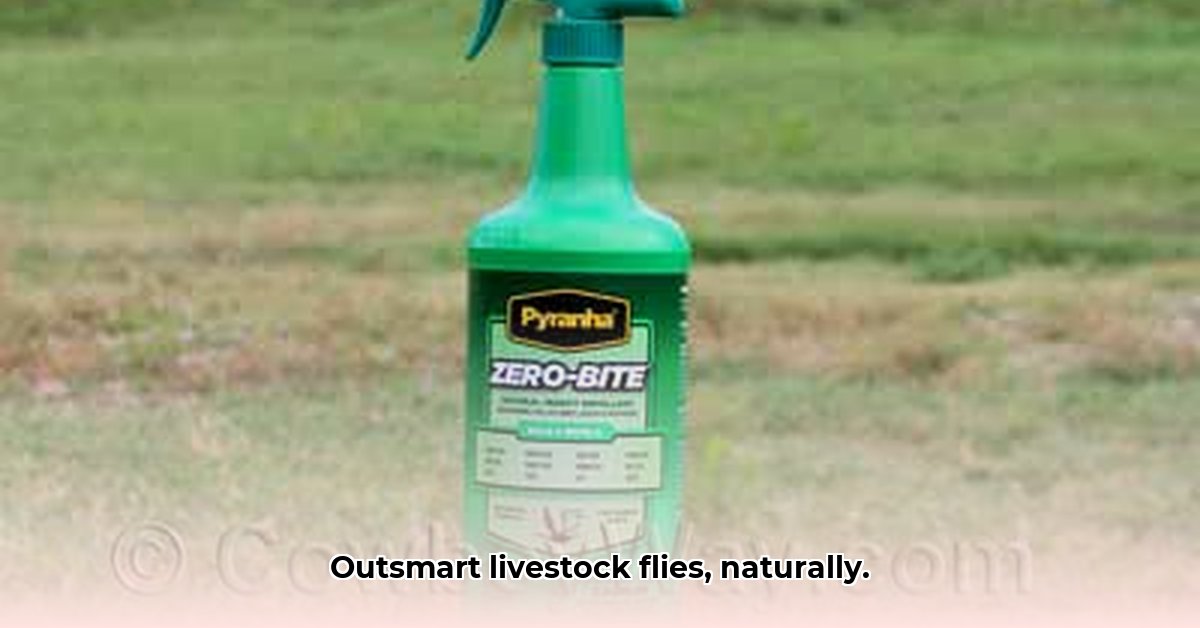
Fly Repellent Tractor Supply: Eco-Friendly Solutions for Sustainable Livestock Management
Dealing with flies on your farm negatively impacts animal welfare, reduces productivity, and lowers profits. Fortunately, effective and sustainable fly control is achievable without relying solely on harsh chemicals. This guide outlines eco-friendly strategies to minimize fly populations and protect your livestock, land, and bottom line. For additional livestock health resources, check out this helpful guide on goat deworming.
Building Your Fly-Fighting Fortress: A Multi-Layered Approach
A successful fly control program utilizes a multi-pronged approach, combining preventative measures, biological controls, and targeted repellents. This integrated pest management (IPM) strategy offers a sustainable and effective solution.
1. Sanitation: The Cornerstone of Fly Control
Did you know that flies breed in filth? Regularly cleaning barns, stalls, and animal pens is crucial. Removing manure frequently and cleaning hard-to-reach areas significantly reduces breeding sites. A clean environment is the foundation of effective fly management. Aim for daily manure removal in high-traffic areas.
2. Pasture Management: Rotational Grazing for Fly Control
Overgrazing concentrates manure and decaying matter, creating ideal breeding grounds for flies. Implementing rotational grazing, moving animals to fresh pastures regularly, disrupts fly breeding cycles and prevents manure build-up. This simple practice can dramatically reduce fly populations. Consider a rotation schedule that allows for at least a 30-day rest period for each pasture.
3. Biological Control: Harnessing Nature's Predators
Nature offers powerful allies. Birds and beneficial insects are natural fly predators. Creating a habitat that attracts these natural enemies, such as planting flowering plants, significantly reduces fly populations. Avoid using broad-spectrum pesticides that harm beneficial insects. A healthy ecosystem is your strongest defense.
4. Organic Repellents: Safe and Effective Options
Tractor Supply and other farm stores offer various organic fly repellents. Essential oils like citronella, lemongrass, and peppermint possess fly-repelling properties. However, thorough research is crucial to determine which oils are safe and effective for your specific livestock. Always test a small area before widespread application.
5. Integrated Pest Management (IPM): Combining Strategies for Maximum Impact
IPM combines preventative measures, biological controls, and organic repellents for optimal results. Regularly monitor fly populations, adapting your strategy as needed. This flexible, evolving approach ensures long-term success. Consistent monitoring is key to effective IPM.
Organic vs. Chemical Fly Control: A Comparative Analysis
Choosing between organic and chemical fly control depends on several factors, including livestock type, operation scale, budget, and environmental concerns. While synthetic repellents offer immediate and potent protection, they pose potential harm to the environment and animal health. This necessitates careful application, disposal, and adherence to safety regulations. Organic repellents, while potentially requiring more frequent application, offer a safer alternative with minimal environmental impact.
- Organic Repellents: Pros: Environmentally friendly, generally safe, relatively inexpensive; Cons: May require more frequent application, effectiveness can vary.
- Chemical Fly Control Products: Pros: Highly effective, long-lasting; Cons: Potential harm to environment and animal health, requires careful application and disposal.
Keeping an Eye on the Enemy: Monitoring and Evaluation
Effective fly control requires ongoing monitoring and evaluation. Regularly assess fly populations to determine the effectiveness of your strategy. This allows for timely adjustments, ensuring a continuously optimized approach. Regular monitoring allows for data-driven improvements to your fly control plan.
"Consistent monitoring is paramount for effective fly control. Regular checks allow for prompt adjustments to your approach, preventing fly populations from resurfacing." - Dr. Emily Carter, Extension Entomologist, University of Agriculture.
Oiler Types & Application Methods
Various oiler types cater to diverse needs and budgets. Back rubbers offer a simple, low-cost solution, while electric oilers provide more consistent application. Pour-on repellents allow targeted application but may cause skin irritation in some animals. Choosing the right oiler type depends on your specific circumstances.
| Type of Oiler | Pros | Cons |
|---|---|---|
| Back Rubbers | Simple, low cost, easy installation | Inconsistent application, may not reach all areas of animal |
| Electric Oilers | More consistent application, less labor required | Higher initial investment, requires electricity source and maintenance |
| Pour-on Repellents | Easy to apply directly, can target specific areas | Possible skin irritation, may not be as effective in hot climate |
By implementing these integrated strategies, you can effectively manage fly populations while safeguarding your animals, your land, and your profitability. Remember that sustainable fly control is an ongoing process requiring regular monitoring and adaptation.